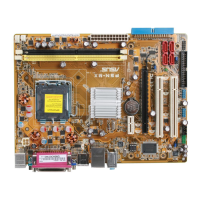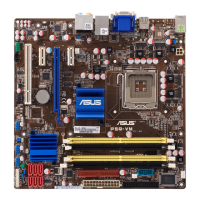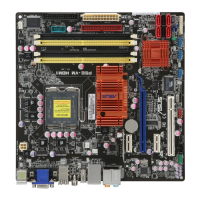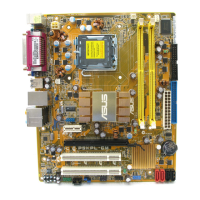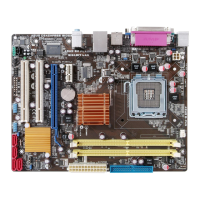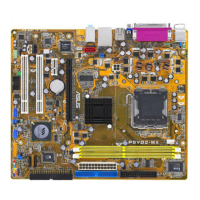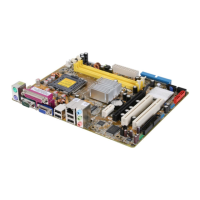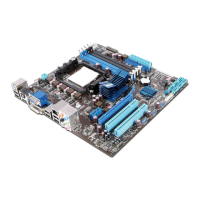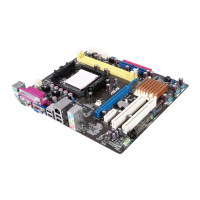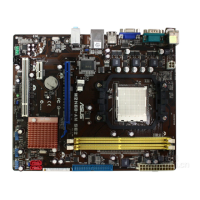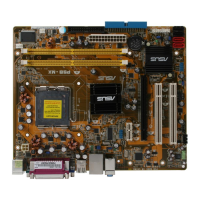
Do you have a question about the Asus P5B-MX - Motherboard - Micro ATX and is the answer not in the manual?
| Brand | Asus |
|---|---|
| Model | P5B-MX - Motherboard - Micro ATX |
| Category | Motherboard |
| Language | English |
Precautions to prevent electrical shock hazards and ensure safe operation.
Guidelines for safely installing and operating the motherboard and its components.
Overview of the manual's structure, detailing its main parts and content.
Sources for additional product and software updates, including ASUS websites and optional documentation.
Explanation of text formatting conventions like bold, italics, and key notations.
Greeting and introduction to the ASUS P5B-MX/WIFI-AP motherboard.
List of items included in the motherboard package for user verification.
Highlights of the motherboard's key features and technologies.
Details on the Intel® 946GZ graphics memory controller hub and ICH7 I/O controller.
Information on the motherboard's support for DDR2 memory modules and dual-channel architecture.
Description of support for next-generation hard drives based on SATA 3Gb/s specification.
Explanation of the S/PDIF-out function for digital audio transfer.
Details on the onboard 6-channel HD audio CODEC for high-quality sound output.
Overview of ASUS proprietary technologies like Q-Fan, MyLogo2, EZ Flash, and CrashFree BIOS.
Information on the integrated wireless LAN module for creating a home network.
Explanation of the motherboard's standby power LED and its indication meanings.
Guidance on orienting the motherboard correctly within the chassis.
Instructions on securing the motherboard to the chassis using specific screw points.
Diagram and identification of key components and connectors on the motherboard.
List of motherboard slots, jumpers, and connectors with corresponding page references.
Step-by-step instructions for installing a CPU onto the motherboard socket.
Procedure for mounting the CPU heatsink and fan assembly for thermal management.
Steps to safely remove the CPU heatsink and fan assembly from the motherboard.
Description of the motherboard's DDR2 DIMM sockets and their features.
Details on compatible memory sizes, configurations, and limitations for optimal performance.
Instructions for physically installing an expansion card into the motherboard slots.
Steps to configure installed expansion cards through BIOS settings and drivers.
Information on standard interrupt assignments and IRQ allocations for motherboard devices.
Description of PCI slots and compatible expansion cards.
Details on the PCI Express x1 slot and its supported expansion cards.
Information on the PCI Express x16 slot for graphics cards and compatible devices.
Procedure to clear the CMOS memory using the CLRTC jumper.
Configuration of jumpers for USB device wake-up from sleep modes.
Setting the KBPWR jumper to enable keyboard wake-up functionality.
Description and identification of all rear panel I/O ports and their functions.
Details on internal connectors for drives, fans, audio, power, and system panel.
Overview of utilities for managing and updating the motherboard BIOS, including EZ Flash and AFUDOS.
Instructions for creating a bootable floppy disk for BIOS operations.
Guide to configuring system settings through the BIOS Setup utility.
Explains BIOS screen layout, menu bar, navigation keys, and UI elements like menus and fields.
Details system information and basic settings like Time, Date, Diskette, and IDE configuration.
Covers CPU, USB, Chipset, and PCI PnP settings for system customization.
Configuration options for system power management, boot priority, security, and saving changes.
Guidance on installing operating systems compatible with the motherboard.
Overview of the drivers, applications, and utilities on the motherboard support CD.
List of available device drivers for activating motherboard hardware components.
List of applications and software provided on the support CD.
Details on how to contact ASUS for support and product information.
Information on the motherboard's compatibility with Intel® EM64T processors and features.
Details on Intel® EIST support, system requirements, and usage procedures.
Information on motherboard support for Intel® Hyper-Threading Technology and its usage.
